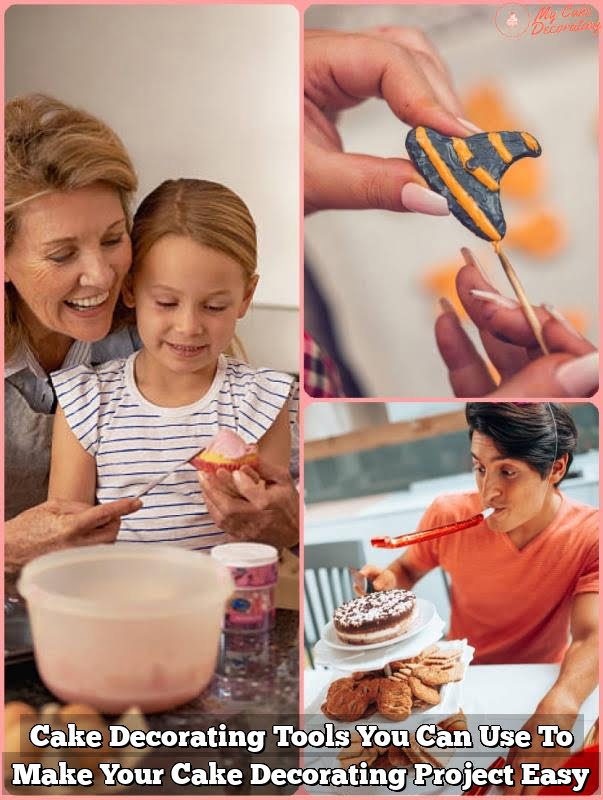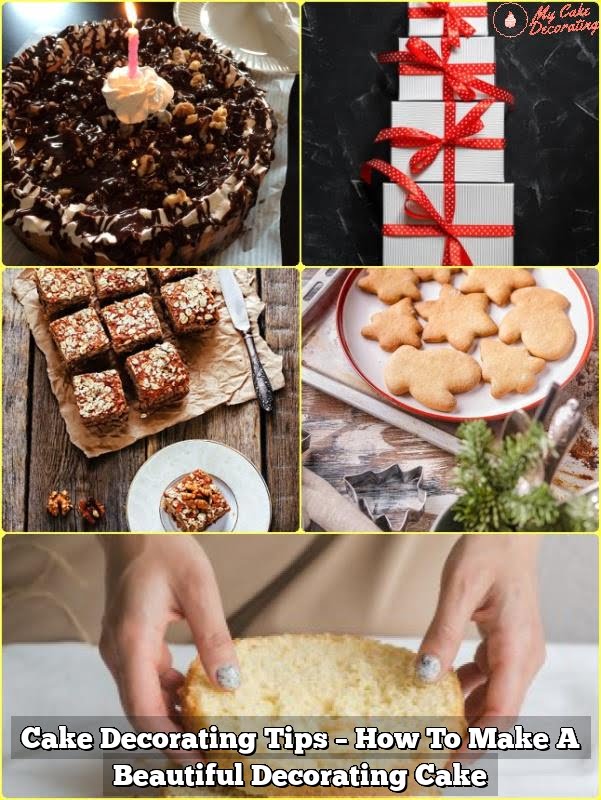Cake decorating dough is a crucial element in the art of creating beautifully adorned cakes. From intricate designs to simple yet elegant decorations, the dough serves as the foundation for bringing creativity and innovation to desserts. In this article, we will delve into how to make cake decorating dough from scratch, outlining the ingredients needed and providing step-by-step instructions for crafting the perfect base for your creative visions.
The key to achieving stunning cake decorations lies in mastering the art of making the ideal dough. By using basic ingredients like flour, sugar, butter, and more, you can create a versatile and pliable medium that will allow you to bring your cake decorating ideas to life. With our detailed guide on mixing, kneading, and resting the dough, you’ll be well on your way to elevating your baking skills and impressing guests with delectable treats.
Whether you’re a seasoned baker or just starting out on your culinary journey, these tips for success will help ensure that your cake decorating dough turns out flawlessly every time. From proper measuring techniques to achieving the desired consistency, we have you covered with expert advice that will take your creations to the next level. So gather your ingredients and let’s get started on making the perfect cake decorating dough for all your dessert endeavors.
Ingredients Needed
Cake decorating dough is a crucial element in creating beautifully decorated cakes that are not only visually appealing but also delicious to taste. To make the perfect cake decorating dough, you will need a handful of essential ingredients that work together to form the ideal texture and flavor.
Flour serves as the base ingredient for cake decorating dough, providing structure and stability to the mixture. Sugar adds sweetness and caramelization during baking, enhancing the overall taste of the dough. Butter gives richness and moisture to the dough, creating a soft and pliable consistency that is easy to work with when decorating cakes.
In addition to these basic ingredients, other components like eggs, vanilla extract, salt, and baking powder may also be necessary depending on the specific recipe you are following. Each ingredient plays a crucial role in determining the final outcome of your cake decorating dough, so it is essential to use high-quality products and follow the measurements accurately.
| Ingredients | Purpose |
|---|---|
| Flour | Provides structure and stability |
| Sugar | Adds sweetness and caramelization |
| Butter | Gives richness and moisture |
Step-by-Step Instructions
Gathering Ingredients
To start making your cake decorating dough, gather all the necessary ingredients listed in the recipe – typically flour, sugar, butter, eggs, and any additional flavorings or coloring agents. It is crucial to ensure that these ingredients are fresh and of good quality to achieve the best results. Proper measurement of each ingredient is key to the success of your dough, so make sure to use measuring cups and spoons accurately.
Mixing and Kneading
Once you have all your ingredients ready, begin by mixing the dry ingredients together in a large bowl. Gradually add in the wet ingredients while continuing to mix until a dough forms. Next, transfer the dough onto a lightly floured surface and knead it until smooth and elastic. This process helps develop gluten in the dough, giving it structure and strength for decorating purposes.
Resting the Dough
After kneading the dough thoroughly, allow it to rest for a specified amount of time as indicated in the recipe. Resting allows the gluten strands to relax and develop further, resulting in a more workable texture for shaping and decorating.
Cover the dough with plastic wrap or a damp cloth during this resting period to prevent it from drying out. Once rested, your cake decorating dough will be ready for shaping into various designs and patterns to adorn your cakes beautifully.
Tips for Success
Cake decorating dough is a crucial element in creating visually stunning cakes that not only taste delicious but also look beautiful. To ensure your cake decorating dough turns out just right, it’s essential to follow certain tips and tricks that can help you achieve the desired consistency and texture. Here are some helpful tips to keep in mind when making your cake decorating dough:
- Use high-quality ingredients: Starting with the best quality ingredients, such as flour, sugar, butter, and eggs, will make a significant difference in the final outcome of your cake decorating dough.
- Proper measuring techniques: Accurately measuring all the ingredients is key to achieving the right balance of flavors and textures in your cake decorating dough. Invest in a good set of measuring cups and spoons for precise measurements.
- Kneading technique: When kneading the dough, make sure to knead it gently but thoroughly until it reaches a smooth and elastic consistency. Over-kneading can result in tough dough, while under-kneading may lead to an uneven texture.
In addition to these tips, there are specific methods you can follow to ensure that your cake decorating dough turns out just right. One popular method is the creaming method, which involves beating together the butter and sugar until light and fluffy before adding other ingredients. This technique helps aerate the dough and create a tender crumb texture in the finished product.
Another method you can use is the rubbing-in method, where cold butter is cut into dry ingredients until it resembles coarse crumbs. This method is commonly used for making shortcrust pastry dough but can also be adapted for cake decorating dough. By understanding different techniques and following these helpful tips, you’ll be well on your way to making perfect cake decorating dough every time.
Decorating Ideas
Decorating cakes with cake decorating dough is a fun and creative way to add a personalized touch to any special occasion. There are countless ways to use cake decorating dough to create beautiful and unique designs that will impress your guests. One popular idea is to create different shapes using cookie cutters.
Simply roll out the dough, cut it into your desired shape, and then place it on top of the cake for a stunning effect. You can also combine different shapes and colors to create a more intricate design.
Another creative way to use cake decorating dough is by making patterns or designs with a piping bag. Fill the piping bag with your desired colored dough and pipe delicate designs onto the cake’s surface. This technique allows you to get as detailed as you want, whether you’re creating floral patterns, geometric shapes, or even writing messages on the cake. You can also experiment with different piping tips to achieve various effects.
If you’re looking for a more advanced decorating technique, try creating 3D designs using cake decorating dough. Sculpt the dough into intricate shapes or figures like flowers, animals, or even buildings. With some practice and patience, you can bring your creations to life on top of your cakes. Remember that the key to successful cake decorating with dough is practice and experimentation – don’t be afraid to get creative and try new things.
| Decorating Ideas | Creative Ways |
|---|---|
| Using cookie cutters for different shapes | Creating intricate patterns with a piping bag |
| Experimenting with colors and textures | Trying advanced techniques like sculpting 3D designs |
Troubleshooting
When making cake decorating dough, it’s common to encounter some issues along the way that can affect the final result. Fortunately, most of these problems have simple solutions that can help you salvage your dough and still create beautifully decorated cakes. Here are some common issues that may arise during the dough-making process and how to fix them:
- Crumbly Dough: If your dough is too crumbly and dry, it may be due to not enough liquid in the mixture. To fix this issue, gradually add a small amount of water or milk while kneading the dough until it reaches the desired consistency.
- Sticky Dough: On the other hand, if your dough is too sticky and wet, you may have added too much liquid. In this case, sprinkle a little bit of flour onto the dough as you knead it until it becomes smooth and workable.
- Tough Dough: If your cake decorating dough is turning out tough and hard instead of soft and pliable, you may have overworked it during the mixing and kneading process. Try to handle the dough gently, only kneading it until all ingredients are well incorporated to avoid developing gluten too much.
By addressing these common issues with your cake decorating dough, you can ensure that your final product turns out just right for creating stunning cakes. Remember to follow the step-by-step instructions provided earlier in this guide to make sure you’re on the right track from start to finish. With a little practice and patience, you’ll soon be able to master the art of making cake decorating dough at home like a pro.
Storage and Preservation
Storing Leftover Dough
When it comes to cake decorating dough, sometimes you may have leftovers after making your beautiful creations. Proper storage is key to ensuring the dough maintains its freshness for future use. The best way to store leftover cake decorating dough is by wrapping it tightly in plastic wrap or storing it in an airtight container. This helps prevent the dough from drying out and becoming hard.
Refrigeration vs. Freezing
If you plan on using the leftover cake decorating dough within a few days, refrigeration is the way to go. Simply place the wrapped or containerized dough in the refrigerator, making sure to use it within 2-4 days for optimal freshness. Alternatively, if you want to save the dough for longer periods, freezing is a great option. Wrap the dough well and place it in the freezer, where it can be stored for up to 2-3 months.
Tips for Preserving Freshness
To maintain the freshness of your cake decorating dough, there are a few additional tips you can follow. Make sure to label and date the stored dough so you know when it was made and how long it has been stored.
When ready to use the dough again, allow it to come to room temperature before rolling it out and decorating your cakes. By following these storage and preservation practices, you can ensure that your cake decorating dough stays fresh and ready for whenever inspiration strikes.
Conclusion
In conclusion, cake decorating dough plays a crucial role in creating beautifully decorated cakes that are not only visually appealing but also delicious. By following the step-by-step instructions provided in this article, you can easily make your own cake decorating dough from scratch using simple ingredients like flour, sugar, and butter.
The process may seem daunting at first, but with practice and patience, you’ll soon be on your way to creating stunning cake decorations that will impress your friends and family.
To ensure success in making cake decorating dough, it’s essential to pay attention to details such as proper measuring techniques and achieving the desired consistency through mixing and kneading. Additionally, don’t forget to let the dough rest before using it for decorating purposes as this will help improve its texture and workability. With these tips and tricks in mind, you’ll be well-equipped to tackle any challenges that may arise during the dough-making process.
So why not unleash your creativity and experiment with different shapes, patterns, and designs when it comes to decorating cakes with your homemade dough? Whether you’re a beginner or experienced baker, making your own cake decorating dough at home is a rewarding experience that allows you to add a personal touch to your sweet creations. Give it a try today and elevate your baking game with unique and customized cake decorations that will surely impress everyone who tastes them.
Frequently Asked Questions
What Is a Good Substitute for Fondant?
A good substitute for fondant in cake decorating is modeling chocolate. Modeling chocolate is made from melted chocolate and corn syrup, providing a pliable texture similar to fondant but with a rich chocolate flavor.
What Is Fondant Made Of?
Fondant is typically made of sugar, water, and some form of gelatin or agar for stability. The mixture is cooked to the soft-ball stage before being kneaded into a smooth dough-like consistency used for covering cakes.
How to Make Fondant for Decoration?
To make fondant for decoration, you’ll need powdered sugar, gelatin, water, glucose syrup, glycerin, and various flavorings or colors as desired. The process involves dissolving the gelatin in hot water before mixing it with the remaining ingredients to form a smooth dough ready for rolling out and shaping on cakes.

Welcome to my blog about home and family. This blog is a place where I will share my thoughts, ideas, and experiences related to these important topics. I am a stay-at-home mom with two young children. I hope you enjoy reading it! and may find some helpful tips and ideas that will make your home and family life even better!





